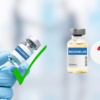Glaucoma is a significant ocular ailment impacting millions of individuals globally. Glaucoma is a “silent thief of sight,” it has the potential to induce irreversible vision impairment without manifesting any discernible symptoms during its initial phases.
What is Glaucoma?
Glaucoma is a group of eye diseases that can damage the optic nerve, which carries visual information from the eye to the brain. This damage leads to vision loss and blindness. It is often associated with increased eye pressure and other risk factors. Glaucoma cannot be cured but can be managed through medication and surgery, with regular monitoring by an eye doctor.
The theme of World Glaucoma Day 2024
The theme for World Glaucoma Day 2024, observed from March 12, is “Uniting for a Glaucoma-Free World’” This theme emphasizes the importance of early detection and treatment to prevent irreversible vision impairment caused by glaucoma.
Global Glaucoma Prevalence and Impact
Global estimates from a 2014 meta-analysis indicate a glaucoma prevalence of 3.54%, with Africa having the highest rates. Approximately 11.9 million people worldwide are affected by glaucoma, positioning it as the second leading cause of preventable blindness, contributing to 8% of cases.
Glaucoma in India:
In India, glaucoma prevalence varies due to methodological disparities, as seen in studies like the Vellore Eye Survey and the Andhra Pradesh Eye Disease Study. Approximately 11.2 million Indians aged 40 and above are affected, with primary open-angle glaucoma impacting 6.48 million individuals. In rural Central India, prevalence stands at 2.8%, with age, BMI, and intraocular pressure linked to the condition.
Regional differences are notable, with Southern India reporting higher instances of primary glaucoma and a tendency for advanced-stage diagnoses, highlighting the urgency of early detection and awareness initiatives.
Glaucoma Comes in various forms:
- Open-angle glaucoma: Common, gradual drainage inefficiency increases eye pressure.
- Angle-closure glaucoma: Sudden drainage blockage causes rapid eye pressure rise.
- Normal-tension glaucoma: Optic nerve damage despite normal eye pressure.
- Secondary glaucoma: Arises from other eye conditions like injury or inflammation.
Signs and Symptoms
Glaucoma often has no noticeable symptoms in its early stages, making regular comprehensive eye exams crucial for early detection. Symptoms of glaucoma vary based on type and stage, often progressing slowly:
- Gradual loss of peripheral vision: An early indicator.
- Blurred or hazy vision: Common in initial stages.
- Halos around lights: Particularly noticed at night.
- Intense eye pain: Occurs suddenly in acute cases.
- Redness in the eye: Alongside sudden pain and vision changes may signify an acute attack.
Diagnosis and Screening
Diagnosing glaucoma involves various tests like tonometry to measure eye pressure, ophthalmoscopy to examine the optic nerve, visual field testing to assess peripheral vision, and pachymetry to measure corneal thickness. Regular screenings are essential for early detection.
Treatment
Treatment for glaucoma includes medications like eye drops to reduce eye pressure, laser therapy, or surgery. While these treatments do not cure glaucoma, they effectively manage the condition and prevent further vision loss. Adherence to treatment plans is crucial for optimal outcomes.
Medications Used in Glaucoma Treatment
Eye Drops: Common medications like prostaglandin analogs (e.g., latanoprost), beta-blockers (e.g., timolol), alpha agonists (e.g., brimonidine), and carbonic anhydrase inhibitors (e.g., dorzolamide) are used to lower intraocular pressure.
Surgery: Procedures like trabeculectomy or laser trabeculoplasty are performed in advanced cases to improve fluid drainage from the eye and reduce pressure.
World Glaucoma Day: Spreading Awareness and Saving Sight
Raising awareness about glaucoma is crucial to prevent vision loss and improve outcomes. Understanding risk factors, symptoms, and treatments empowers individuals to protect their vision. Early detection and treatment are essential for managing glaucoma effectively. Join us in spreading awareness to combat this sight-threatening condition. Schedule an eye exam today and let’s work together to #BeatGlaucoma!
Written By
Aswini PriyaMedical Content Writer
Reviewed By
Dr. AnchalMedico Expert
Last Updated
12 Mar 2024 | 11:00 AM (IST)










